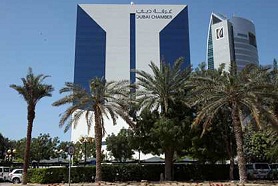
A report issued by the Dubai Chamber of Commerce and Industry, based on a recent study by Ernst and Young, says that global Islamic banking assets have registered cumulative annual growth rate of about 16 percent during the period 2008-2012, reflecting the radical shift from a conventional financial system in favour of Islamic finance.
The report was issued within the framework of the preparations for the 10th World Islamic Economic Forum (WIEF) to be organised in Dubai by Dubai Chamber and the WIEF Foundation from 28th-30th October, 2014.
As the emphasis on low risk product alternatives kept the sector insulated from the financial meltdown, Islamic banking products and services have consistently gained market share in recent times, growing up to 50 percent faster than the traditional banking sector in some markets.
The U.A.E. is emerging as a serious player in this sector, with total Islamic banking assets growing to about US$95 billion in 2013 compared to $83 billion in 2012. This momentum is unlikely to lose steam as the Dubai Chamber report shows that the compound annual growth rate (CAGR) for Islamic banking assets in the U.A.E. is expected to be about 17 percent over the period 2013-2018.
“The report by Dubai Chamber shows that the prospects of Islamic banking are very promising as indicated by the significantly high growth rates of Islamic banking total assets,” said Hamad Buamim, President and CEO of Dubai Chamber, adding, “The research note supports Dubai’s recognition of Islamic finance as a key pillar in the strategy to position itself as the centre for Islamic banking and finance as part of the Dubai Capital of Islamic Economy initiative.” “Dubai has the potential to shape the course of the massive Islamic economy, and this is reflected in the choice of Dubai as the venue for the 10th World Islamic Economic Forum (WIEF). The Forum comes as a unique opportunity for Dubai to give a new direction to the Islamic finance industry, and help consolidate efforts, share knowledge and experiences to leverage the emerging opportunities in the changing dynamics of the global economy,” Buamim said.
Dubai Chamber estimates that there are 38 million Islamic banking customers around the world, with two thirds of them in Qatar, Indonesia, Saudi Arabia, Malaysia, U.A.E. and Turkey (QISMUT). Among these six prominent Islamic finance countries, Saudi Arabia is the biggest market in terms of Islamic banking assets, with an estimated value of about US$285 billion in 2013 compared to $245 billion in 2012.
Research shows that Saudi Arabia represents about 43 percent of the total Islamic banking assets in all the six countries. It also accounts for about 53 percent of Saudi Arabia’s total domestic banking assets.
According to the World Islamic Banking Competitiveness Report, 2013–14, while one-fifth of the banking system assets across QISMUT have transitioned to Islamic banking, in Saudi Arabia, supply push has seen share of Islamic banking cross 50 percent of system assets.
In 2012, the group of QISMUT was the fastest growing market for Islamic banking, with total Islamic banking assets commanded reaching about US$567 billion, and has registered CAGR of about 16.4 percent over the period 2008-2012, according to Dubai Chamber.
The Dubai Chamber research also shows that, globally, the Islamic banking profit pool is projected to reach US$30.5 billion by 2018, driven mainly by higher retail focus. In 2012, QISMUT Islamic banking profit pool was estimated at US$9.4 billion and it is expected to reach $26.4 billion by 2018.
The Dubai Chamber report, however, points out that many Islamic retail banks suffer from lower profitability than conventional banks, mainly due to higher expenses attributed to complex products, lengthy process steps and more interfaces.
Source : WAM News Agency for United Arab Emirates












